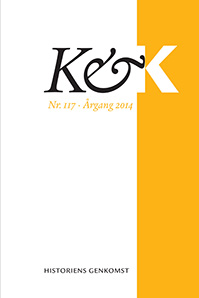TURISME, DIGT OG HISTORIE - TINTERN ABBEY SOM EKSEMPEL PÅ ÆSTETISK OBJEKTIVATION
DOI:
https://doi.org/10.7146/kok.v42i117.17556Nøgleord:
Aesthetic objectivation, non-universalism, sense object, reflexive object, romanticism, cultural history, singularity, English literary history, tourism and poetry, the pittoresque, the Claude glass, places, object philosophyResumé
TOURISM, POETRY, AND HISTORY. TINTERN ABBEY AS AN EXAMPLE OF AESTHETIC OBJECTIVATION | The essay presents a new concept which I call ‘aesthetic objectivation’. It deals with how to understand and grasp specific literary texts, events and conceptualisations due to a specific field of both disrupted and progressive historical features, in which the same object is being perceived, firstly as a sense object, secondly as reflexive object. The concept is shaped by a non-universalistic and non-Hegelian objectivity thinking. The line from Gilpin’s ‘pittoresque’ and sensual description of Tintern Abbey in Observations on the River Wye to the reflexive use of the very same ruin in Wordsworth’s “Tintern Abbey”, Tennyson’s “Tears, Idle Tears”, and Ginsberg’s “Wales Visitation” serves as an exemplifying study case.
Downloads
Citation/Eksport
Nummer
Sektion
Licens
Tidsskriftet følger dansk ophavsret.





